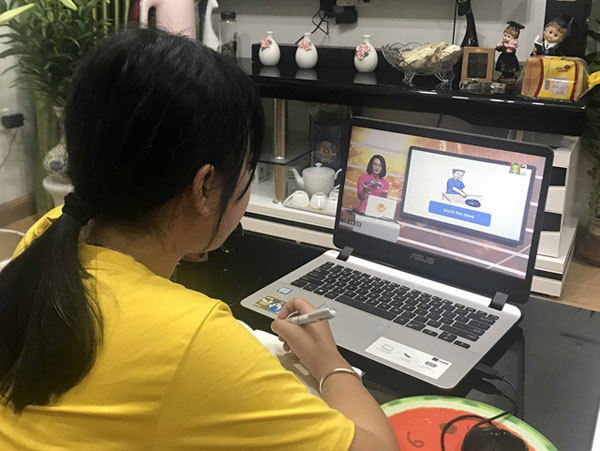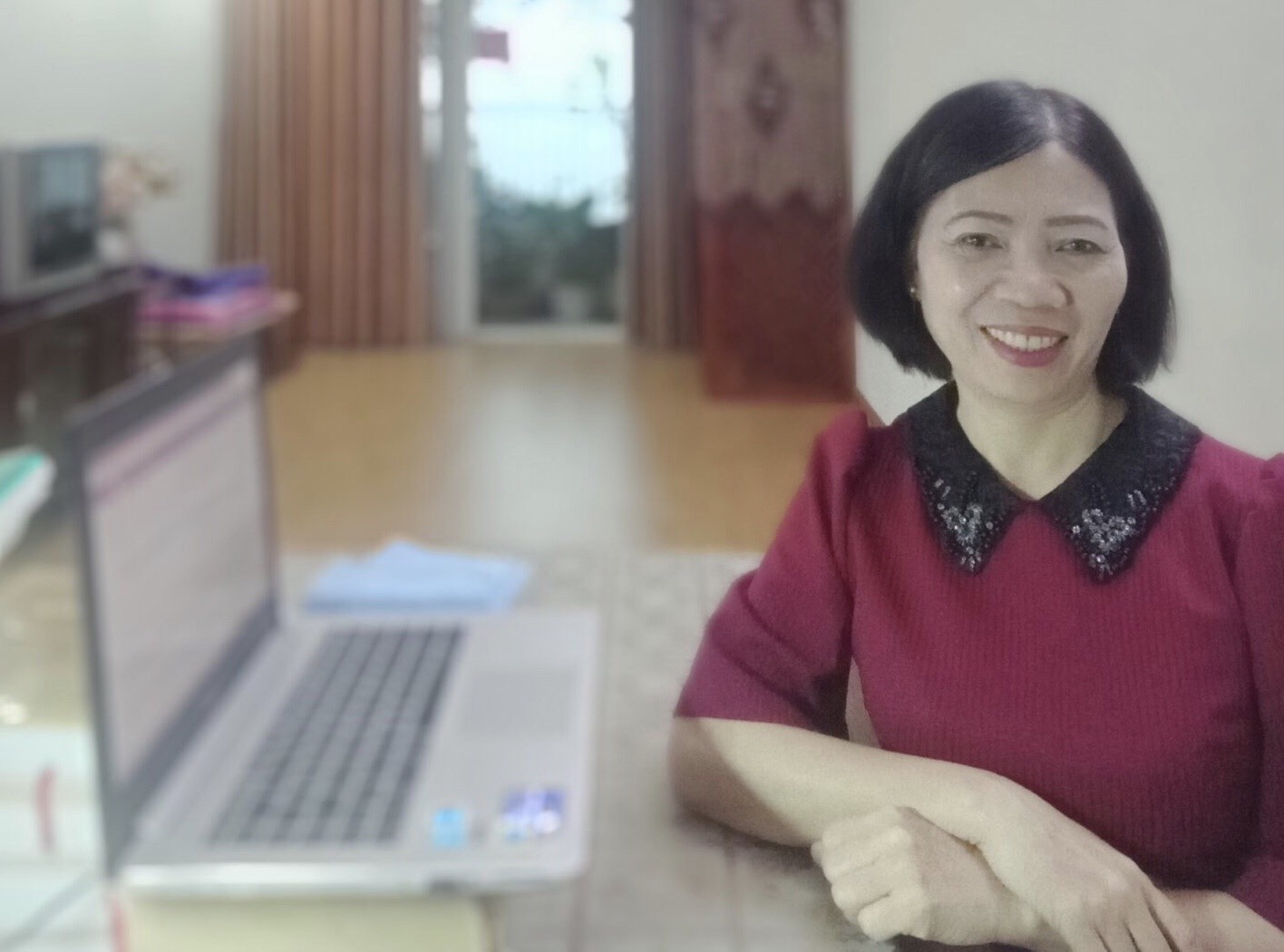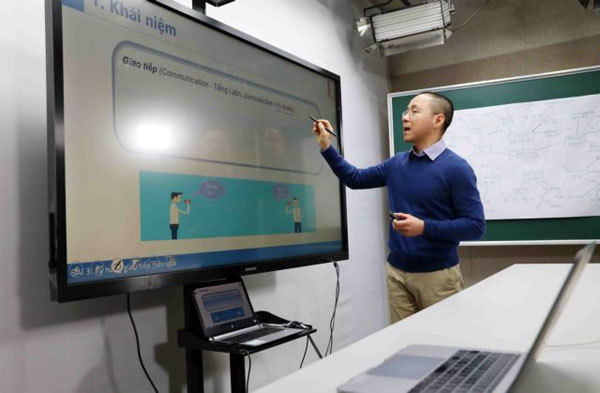 |
|
A student from Phuong Mai Primary School in Hanoi’s Dong Da District learns a lesson on Hanoi Television while her school is closed due to the COVID-19 pandemic.
|
Online education has become common due to the COVID-19 pandemic. What does online education mean to you?
We need to clarify two ways of delivering online education.
Firstly, it is the usage of online video conferencing tools, such as Google Meet or Zoom, for delivering teaching lessons in real-time, which can be referred to as Real-time Online Teaching (ROT).
Secondly, courses, teaching and learning activities are also conducted online via learning management systems (LMS) such as Moodle, Blackboard, Microsoft Teams or Massive Online Open Courses (MOOCs) such as edX or Coursera. We can call it Online Delivery Courses (ODC).
It's necessary to differentiate between ROT and ODC. The latter is a platform for running an entire course or a part of a course, while ROT is an online channel for delivering lessons of a course. ROT can be used as one of the methods for transmitting teaching contents on ODC.
In my opinion, ODC will be a key method of online education in the near future when the COVID-19 pandemic ends in Vietnam. Being used in tandem or collaboratively with traditional teaching, ODC will help form a blended learning method, which can improve the quality of teaching.
Why do you think ODC will become so important?
Indeed, without the COVID-19 pandemic, it would be difficult for ROT to dominate as it is today because it cannot completely replace traditional face-to-face teaching. Learners may feel ready and interested if they use ROT for one or two subjects per semester. But it would not be really comfortable for them if they have to be online at the right time, right place, sitting right in front of the computer for listening to 5-7 lectures a week (given their number of courses was up to seven per a semester).
It is more difficult for students to exchange ideas with their teachers as well as interact with their friends compared to when they are in physical classrooms.
In addition, ROT also requires learners to arrange their own work and time to join the others on the same schedule as the whole class.
For teachers, the biggest challenge is that they can’t easily use eye-contact with their students to see how they are participating in class or whether or not they understand the lessons. Also, security issues or unexpected harassment which might occur when using ROT is also a problem.
ODC can be used in different modes, such as delivering a whole study course (100 per cent content of the course is delivered online); being as a part of a traditional course (part of the course is taught online by ODC); or, being used as a channel to supplement and reinforce traditional courses.
As such, it is possible to combine two methods – online and traditional teaching – into one which is popularly called blended learning.
In this way, initially, teachers will record their lessons on video then upload or sharing those video lessons and learning materials on LMS or MOOCs. When all those are already available in online classrooms, learners will access and work on those resources in advance.
In ODC mode, ROT-type lessons can be organised in different ways, such as inviting experts in a relevant subject to talk or exchange ideas with learners, running Q&A sessions or conducting seminars in groups among learners.
With those activities done online, the work done in the physical classroom will focus on discussion, clarifying the contents or expanding lessons, doing experiments or practices, applying what students learnt into reality, and evaluating learners.
What benefits do teachers, students and schools get from the ODC model?
Much has been talked about the benefit of blended learning. I can summarise several main points as follows.
For teachers, although they have to spend a lot of time on video lessons, those videos can be used for different classes or courses. They have more time to interact with learners, retaining the emotion during the teaching process and inspiring the learners.
For learners, it is possible to actively learn at anytime, anywhere as long as it fits with their living and working conditions. They can interact with each other and teachers more often. The habit of studying is also maintained.
For schools, it is easy for them to develop a diverse digital learning platform from video lectures and other digital resources contributed by lecturers. They can fulfil assessment requirements and reduce pressure on lecture halls while saving running and operating costs due to the reduction of physical classes.
To promote this method, schools should help teachers produce video lectures and operate LMS or MOOCs effectively by offering training or investing in digital learning materials suitable for all courses and programmes.
How will online education be practised after the COVID-19 pandemic ends?
I think the ROT should not and can’t be the prevailing teaching method when everything returns to normal.
It should be noted that online video conferencing is set up to serve conferences remotely when delegates can’t attend an event at a specific time.
ROT works in this particular context (social distancing), especially when many schools and teachers are not ready for ODC.
After the pandemic ends, ODC should be used as a solution parallelly implemented with traditional teaching methods, which can form a blended learning approach in this educational context, a trend that is quite prevalent in the world.
Because learners and teachers have a lot of experience and skills in online teaching and learning in response to the pandemic, it is convenient for ODC to be deployed. Educational administrators will calculate the appropriate ratio of online and offline teaching activities for each course or training programme. VNS/Dantri

Hanoi extends online and television-based teaching during COVID-19
The Hanoi Department of Education and Training has issued guidelines for schools and vocational education centres to extend online and television-based teaching amid the COVID-19 pandemic.

The ‘online lecture halls’ during the COVID-19 pandemic
Prof Dr Ngo Thi Phuong never thought that she would become a teacher for online courses.

Online training should be promoted: Ministry
Almost half of all universities nationwide are turning to online tutoring to make sure students can keep up with their studies.
 Nghiem Xuan Huy, Director of Institute for Education Quality Assurance, a member of Vietnam National University, Hanoi (VNU) talks about the benefits of online education and how it's here to stay.
Nghiem Xuan Huy, Director of Institute for Education Quality Assurance, a member of Vietnam National University, Hanoi (VNU) talks about the benefits of online education and how it's here to stay.